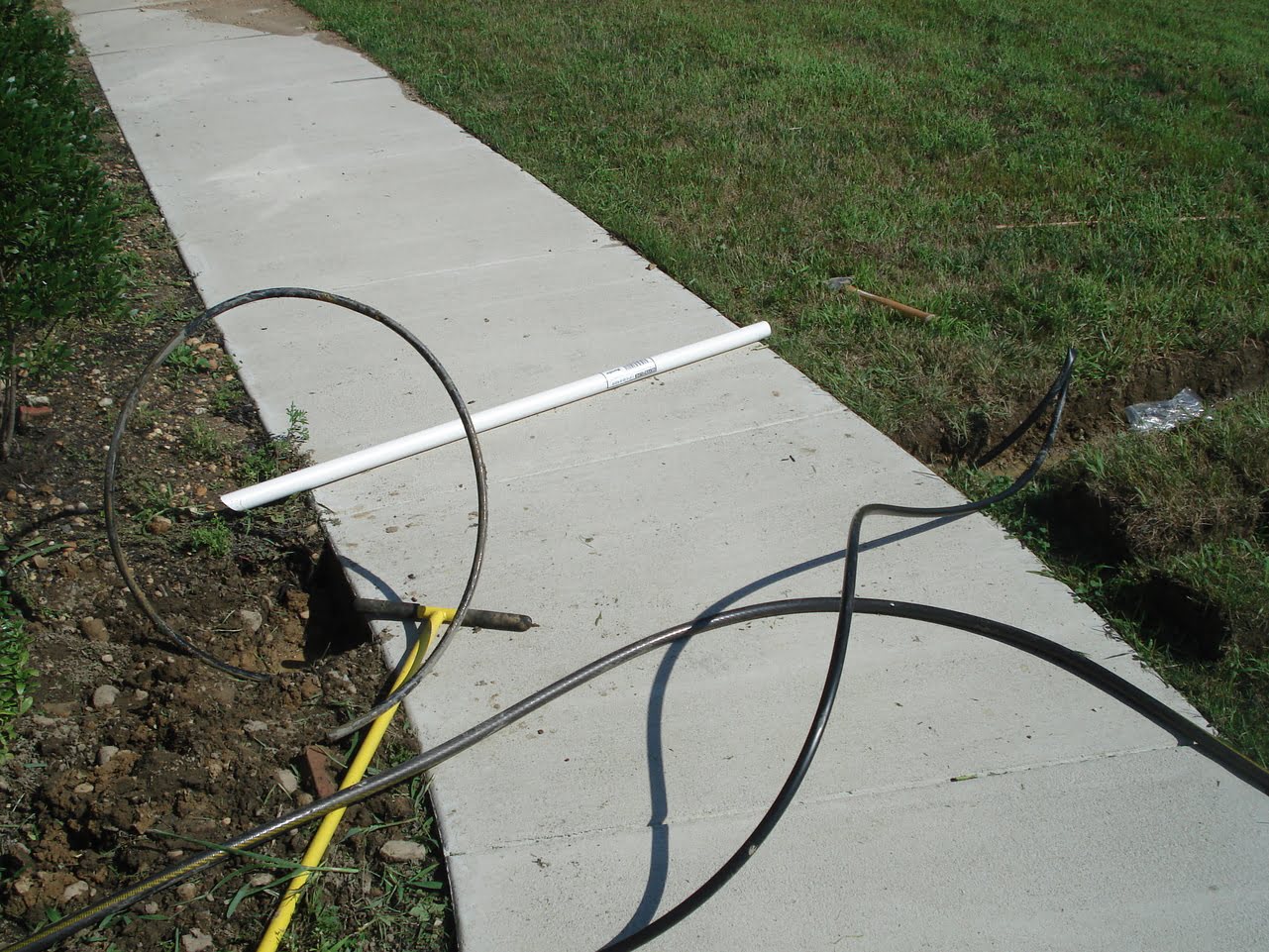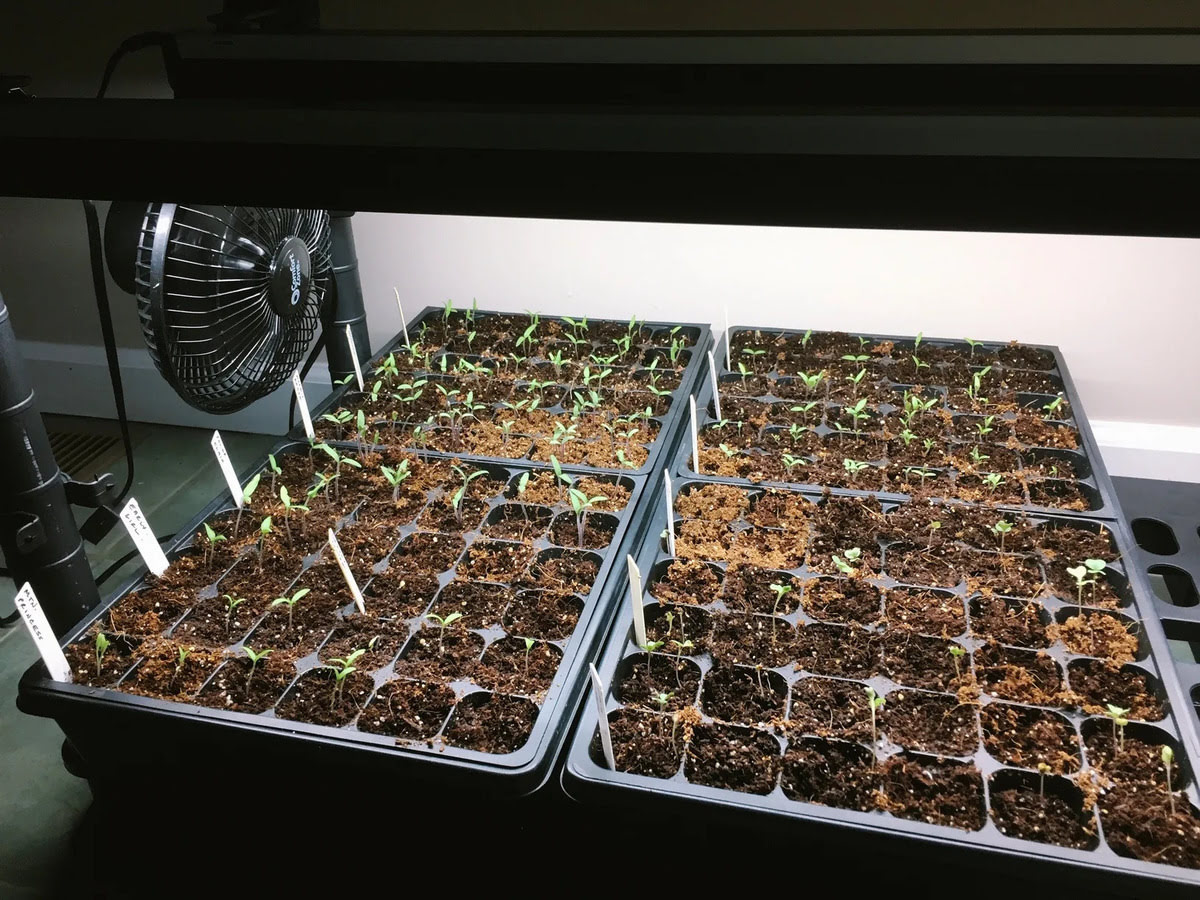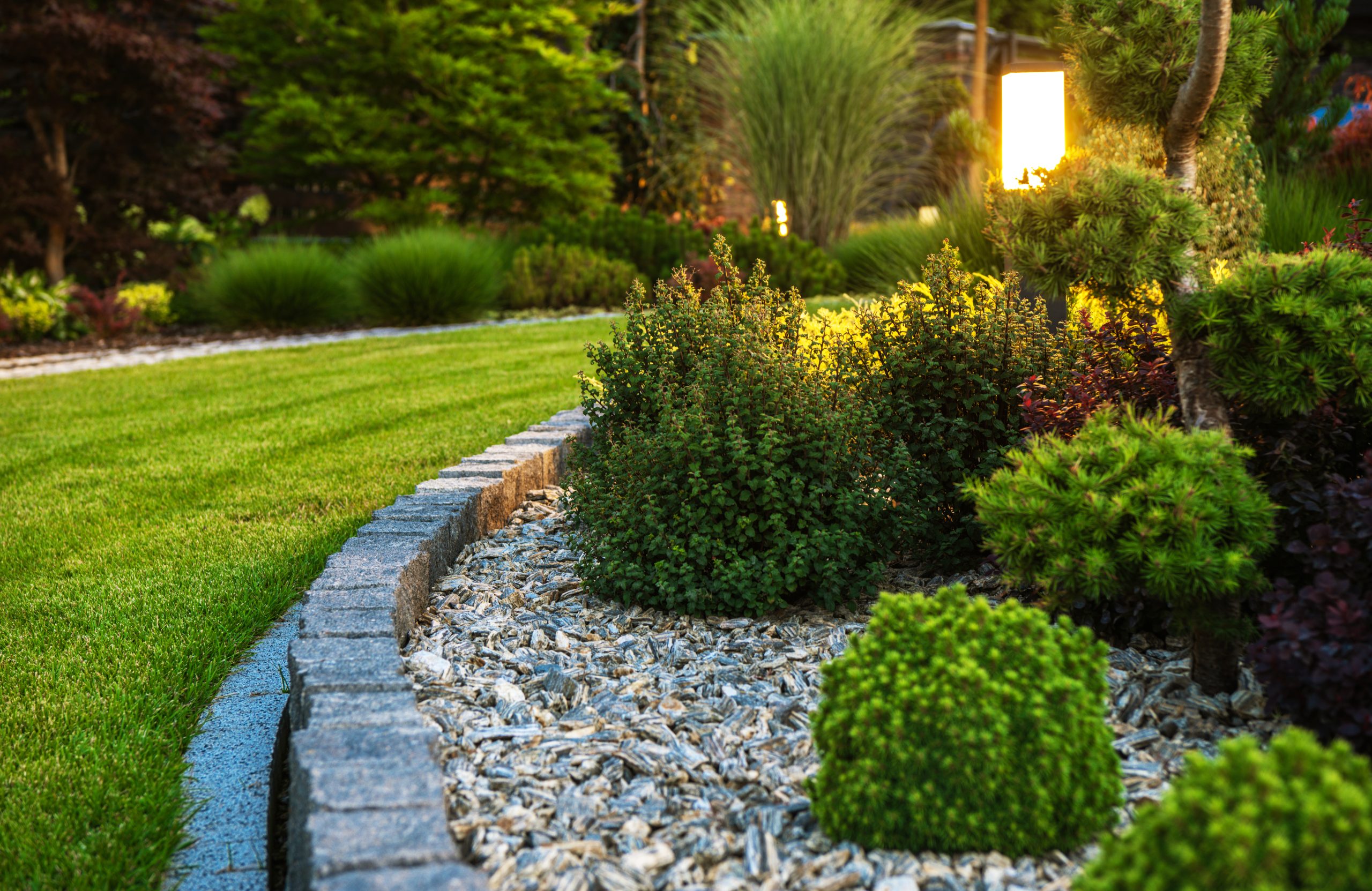Home>Gardening Tips and Tricks>Problem Solving>How To Run Irrigation Under Sidewalk


Problem Solving
How To Run Irrigation Under Sidewalk
Published: November 19, 2023
Learn how to solve the problem of running irrigation systems under sidewalks with our step-by-step guide.
(Many of the links in this article redirect to a specific reviewed product. Your purchase of these products through affiliate links helps to generate commission for Chicagolandgardening.com, at no extra cost. Learn more)
Table of Contents
- Introduction
- Step 1: Gather Materials and Tools
- Step 2: Assess the Sidewalk
- Step 3: Determine the Placement of Irrigation
- Step 4: Prepare the Area
- Step 5: Dig Trenches for the Pipes
- Step 6: Lay the Pipes
- Step 7: Connect the Pipes to the Mainline
- Step 8: Test the System
- Step 9: Backfill the Trenches
- Step 10: Restore the Sidewalk
- Conclusion
Introduction
Running irrigation under a sidewalk can be a challenging task, but with the right knowledge and tools, it can be accomplished successfully. Whether you’re installing a new irrigation system or making repairs to an existing one, running irrigation under a sidewalk allows you to efficiently water your lawn and garden without obstruction. This article will provide you with a step-by-step guide on how to run irrigation under a sidewalk, ensuring that water reaches every part of your yard.
When it comes to installing irrigation under a sidewalk, proper planning is crucial. You need to assess the sidewalk’s material and condition, determine the optimal placement for the irrigation lines, and carefully dig the trenches to avoid damaging the sidewalk or the pipes. Additionally, you’ll need to gather the necessary materials and tools, such as PVC pipes, fittings, primer, solvent cement, a trenching shovel, and a pipe cutter.
Before you begin digging, it’s important to locate any existing underground utilities to prevent accidental damage. Call the utility companies in your area to mark the utility lines before digging. This will ensure that you won’t encounter any unforeseen obstacles during the installation process.
Running irrigation under a sidewalk requires careful attention to detail and adherence to proper techniques. By following the steps outlined in this guide, you’ll be able to install irrigation lines that seamlessly run under the sidewalk, providing your plants with much-needed water while maintaining the integrity of the walkway. Let’s get started!
Step 1: Gather Materials and Tools
The first step in running irrigation under a sidewalk is to gather all the necessary materials and tools for the project. By having everything you need on hand, the installation process will be smoother and more efficient.
Here are the materials and tools you’ll need:
- PVC pipes: These pipes will serve as the conduit for water to flow under the sidewalk. Choose the appropriate size and length based on your specific requirements.
- Fittings: You will need elbows, tees, connectors, and other types of fittings to connect the pipes and create the desired layout for your irrigation system.
- Primer and solvent cement: These are essential for gluing the PVC pipes and fittings together, ensuring a secure and leak-free connection.
- Trenching shovel: A sturdy shovel with a narrow blade will be used to dig the trenches for the pipes. Look for one with a comfortable handle to make the digging process easier.
- Pipe cutter: This tool will allow you to cut the PVC pipes to the required length accurately. Consider using a ratchet-style pipe cutter for smooth and precise cuts.
- Tape measure: You’ll need this to measure the distance between sprinklers and determine the layout and spacing of your irrigation system.
- Pipe reamer: A pipe reamer can be useful for removing burrs and ensuring clean and smooth edges on the PVC pipes.
- Pipe clamps and stakes: These will help secure the pipes in place and prevent any movement or shifting once they are installed.
Before starting the project, it’s a good idea to make a checklist of all the materials and tools you’ll need. This will help you ensure that you have everything before you begin.
Remember, having the right materials and tools is essential for a successful irrigation installation under a sidewalk. Gathering these items before you start will save you time and prevent delays during the project. Once you have everything ready, you can move on to the next step with confidence.
Step 2: Assess the Sidewalk
Before running irrigation under a sidewalk, it’s crucial to assess the condition and material of the sidewalk. This step will help you determine the best approach to ensure a smooth and successful installation without causing any damage to the walkway.
Start by examining the material of the sidewalk. Most sidewalks are made of either concrete or asphalt. Concrete sidewalks are more common and can be more challenging to work with due to their hardness. On the other hand, asphalt sidewalks tend to be softer and more flexible, making it easier to dig underneath.
Once you identify the sidewalk material, assess its condition. Check for any cracks, uneven surfaces, or signs of deterioration. If you notice any significant issues, it may be necessary to consult a professional to evaluate the structural integrity of the sidewalk before proceeding.
Next, determine the thickness of the sidewalk. This information will help you determine the depth at which you’ll need to dig the trenches for the irrigation pipes. Measure the depth by drilling a small hole in the sidewalk or using a specialized tool to assess the thickness accurately.
Additionally, take note of any existing utilities or obstacles near the sidewalk area. This includes underground utility lines, such as gas, water, or electrical lines, as well as tree roots or large rocks. It’s important to avoid these obstructions during the installation process to prevent any damage or disruption to these essential services.
By carefully assessing the condition and material of the sidewalk, you can plan the installation process accordingly. Concrete sidewalks may require more effort and specialized tools, while asphalt sidewalks may be more forgiving. Understanding the thickness of the sidewalk and the presence of any obstacles will help you determine the appropriate depth and location for running the irrigation pipes.
Keep in mind that if you’re unsure about any aspect of assessing the sidewalk, it’s always wise to consult a professional or seek guidance from an experienced irrigation technician.
Step 3: Determine the Placement of Irrigation
Once you have assessed the sidewalk, it’s essential to determine the optimal placement of the irrigation system. This step involves planning the layout and design of the irrigation lines to ensure efficient water distribution throughout your yard.
Begin by considering the specific needs of your lawn and garden. Identify areas that require more water, such as flower beds, shrubs, or areas with high sun exposure. These zones may require additional sprinklers or drippers to provide adequate water coverage.
Measure the distance between sprinkler heads or drippers to determine the spacing needed. This will help you calculate the number of fittings, tees, and elbows required to construct the irrigation lines under the sidewalk.
Consider the water source and mainline connection point. Ideally, the mainline should be located near the existing water supply to minimize the length of pipe needed. Take into account any existing outdoor faucets or taps that can be used as a water source for the irrigation system.
Next, mark the locations where the irrigation pipes will need to cross under the sidewalk. Take note of any curves or turns in the path and plan the layout accordingly. Using a spray marker or chalk, mark the starting and ending points of the trenches on either side of the sidewalk.
It’s important to ensure that the irrigation lines are placed deep enough under the sidewalk to prevent any damage caused by foot traffic or pressure from the walkway. Typically, a depth of 8 to 12 inches is recommended for most irrigation systems. However, refer to local building codes or consult with an expert to determine the required depth in your area.
By carefully determining the placement of the irrigation system, you can ensure that water reaches every part of your yard effectively. Planning the layout and design of the irrigation lines will help you avoid potential obstacles and ensure a well-functioning and efficient irrigation system.
Step 4: Prepare the Area
Before you start digging trenches for the irrigation pipes, it’s crucial to properly prepare the area to ensure a smooth and efficient installation process. This step involves clearing the work area and making necessary adjustments to facilitate the installation of the irrigation lines.
Start by removing any obstacles or debris from the area where you’ll be digging. This includes rocks, roots, and any other objects that may hinder the trenching process. Clearing the area will make it easier to dig the trenches and minimize the chance of damaging the pipes or walkway.
If there are any existing plants, shrubs, or grass in the work area, you may need to temporarily relocate them to a safe location. Use a shovel or a gardening tool to carefully dig up the plants, ensuring you preserve their root systems. Transplant them to pots or another suitable area until the installation is complete.
Take note of any obstructions that may prevent you from digging the trenches in a straight line. This could include tree roots, large rocks, or underground infrastructure. Adjust the path of the trenches to avoid these obstacles while ensuring that the pipes are still correctly positioned.
Once the area is clear and ready, mark the path of the trenches using spray marker or chalk. This will give you a visual guide to follow during the trenching process, ensuring that the pipes are installed in a straight line and at the desired depth.
Before you start digging, double-check the location of any underground utilities. Use caution and avoid damaging any utility lines while excavating the trenches. If necessary, contact the utility companies to verify their exact locations and take appropriate precautions.
Preparing the area before the installation will save you time and potential issues during the trenching process. By clearing the work area, relocating plants, and adjusting for any obstacles, you can ensure a smooth and hassle-free installation of the irrigation system under the sidewalk.
Step 5: Dig Trenches for the Pipes
Once the area is properly prepared, it’s time to start digging trenches for the irrigation pipes. This step is crucial as it determines the path and depth at which the pipes will be installed under the sidewalk.
Using a trenching shovel or a small excavator, begin digging along the marked path of the trenches. Ensure that the trenches are wide enough and deep enough to accommodate the required size of PVC pipes and allow for proper water flow.
When digging the trenches, it’s important to maintain a consistent depth. Use a tape measure or a depth gauge to ensure that the trenches are at the desired depth throughout the entire length. This will help prevent unevenness or potential damage to the pipes once they are installed.
As you dig, be careful not to damage any existing utility lines or underground infrastructure. Keep a safe distance from these elements to avoid any accidental disruptions. If you’re unsure about the location of underground utilities, consult the utility companies and request their assistance.
Consider the slope of the trenches as well. It’s generally recommended to have a slight downward slope to promote proper drainage and prevent water stagnation within the pipes. Aim for a slope of about 1 inch per 10 feet of pipe length.
If you encounter any obstacles, such as tree roots or large rocks, adjust the path of the trenches accordingly. Make sure to remove any obstructions from the trench to ensure a smooth installation process and prevent potential damage to the pipes or sidewalk.
Throughout the trenching process, periodically check the depth and width of the trenches to ensure they meet the required specifications. Adjust as needed to maintain consistency and accuracy.
Remember to take breaks and stay hydrated during the digging process, as it can be physically demanding. Pace yourself and work steadily to achieve the desired results without compromising your safety.
By carefully and accurately digging the trenches, you’re setting the foundation for a successful installation of the irrigation pipes under the sidewalk. Ensure the trenches are deep, wide, and consistent for optimal performance and longevity of the irrigation system.
Step 6: Lay the Pipes
With the trenches prepared, it’s time to lay the irrigation pipes. This step involves carefully placing the PVC pipes in the trenches, ensuring proper alignment and connection between the sections.
Start by laying the mainline pipe in the first trench. Begin at the point where the water source will connect to the irrigation system. Position the pipe along the bottom of the trench, making sure it follows the desired path and slope. If necessary, use pipe clamps or stakes to secure the pipe in place.
As you progress, continue laying the pipes along the marked path of the trenches. If you need to make any turns or bends, use fittings such as elbows or tees to redirect the pipe in the desired direction. Be mindful of maintaining proper alignment and ensuring that the connections are secure.
When placing the sprinkler or drip line outlets, consider the specific watering needs of your landscape. Space the outlets evenly to ensure even water distribution across the yard. Use tees or fittings to connect the outlets to the irrigation pipes and secure them in place.
As you lay the pipes, periodically check for any obstructions or damage. Ensure that the pipes are not being squeezed or crushed by rocks or debris. If you notice any kinks or compromised sections, repair or replace them to ensure proper water flow.
If you need to connect multiple sections of pipe, use PVC primer and solvent cement to create watertight connections. Follow the manufacturer’s instructions for applying the primer and cement, allowing sufficient time for the joints to fully cure.
Once all the pipes have been laid and connected, check for any potential leaks. Turn on the water supply and inspect the system for any water seepage or misaligned connections. Address any leaks immediately to prevent water waste and potential damage.
By carefully laying the pipes in the trenches, you’re ensuring the efficient and reliable distribution of water throughout your irrigation system. Take the necessary time and care to position the pipes correctly, make secure connections, and check for any issues before moving on to the next step.
Step 7: Connect the Pipes to the Mainline
Once the irrigation pipes are laid, the next step is to connect them to the mainline. This is a critical step in the installation process that ensures proper water flow and distribution throughout the system.
Begin by locating the mainline connection point where the irrigation system will connect to the water source. It is usually near an outdoor faucet or a designated irrigation line. Ensure that the mainline pipe is positioned correctly and securely in the trench leading to this connection point.
If necessary, trim the mainline pipe to the proper length and make sure it aligns with the connection point. Use a pipe cutter to achieve clean and precise cuts. Deburr the cut ends of the pipe using a pipe reamer to remove any rough edges or burrs.
Prepare the pipe and fittings for connection by applying PVC primer to the outside of the pipe and the inside of the fittings. Allow the primer to dry for the recommended time, usually a few seconds, before applying solvent cement.
Apply a generous amount of solvent cement to the primed areas, ensuring even coverage. Carefully insert the pipe into the fitting and twist it slightly to ensure a secure connection. Hold the joint in place for a few seconds to allow the cement to set. Repeat this process for all connections.
As you connect the pipes to the mainline, periodically check for any leaks or improperly seated connections. Be thorough in inspecting each joint to ensure there are no signs of water seepage. If you notice any leaks, disassemble the joint, clean the surfaces, and reapply primer and cement before reconnecting.
Once all the connections are made, double-check the alignment and stability of the pipes. Ensure that they are properly supported and secured using clamps or stakes, especially around bends or turns.
After completing the connections, it’s essential to conduct a pressure test. Close all the valves and turn on the water supply to pressurize the system. Monitor the joints and connections for any signs of leaks or water seepage. If any issues arise, make the necessary corrections before proceeding.
By properly connecting the irrigation pipes to the mainline, you’re ensuring the efficient and consistent flow of water throughout the system. Take the time to follow the correct steps and check for any potential leaks to ensure the integrity and functionality of the irrigation system.
Step 8: Test the System
After completing the installation of the irrigation system, it’s crucial to test its functionality and performance before covering the trenches. This step allows you to identify any potential issues or adjustments that need to be made to ensure optimal water efficiency and coverage.
Start by turning on the water supply to pressurize the system. Open the control valves that regulate the flow of water to different sections of the irrigation system. This will enable water to reach the sprinklers or drip lines in their designated zones.
Observe each sprinkler head or irrigation outlet to ensure that water is being distributed correctly. Check for any irregular spraying patterns, low pressure, or malfunctioning heads. Make adjustments to the sprinklers or drip emitters as necessary to achieve the desired coverage and avoid any overspray onto non-targeted areas.
Walk around your lawn or garden and visually inspect the entire system. Look for any leaks, water pooling, or areas of inadequate coverage. Adjust the position and direction of the sprinklers or emitters to rectify any issues.
Test the system in different zones or sections to ensure that water is evenly distributed throughout your entire yard. Ensure that each zone operates as intended and that there are no areas receiving too much or too little water.
Use a flow meter or water gauge to measure the water flow rate and ensure it aligns with the recommended specifications for your specific irrigation system. This will help you assess the efficiency and effectiveness of the system and make any necessary adjustments to achieve optimal performance.
Perform these tests during different times of the day to account for variations in water pressure and temperature. It’s important to test the system under different conditions to ensure that it can accommodate various weather conditions and watering needs.
Make notes of any adjustments or repairs that need to be made based on the test results. Address these issues promptly to avoid water waste and optimize the performance of your irrigation system.
By thoroughly testing the system, you’re ensuring that it functions properly and meets the watering needs of your landscape. Identifying and addressing any issues before covering the trenches will save you time and effort in the long run.
Step 9: Backfill the Trenches
With the irrigation system tested and functioning properly, it’s time to backfill the trenches to ensure the pipes are securely buried and the area is restored to its original condition. This step involves carefully filling in the trenches while ensuring that the pipes remain undisturbed.
Start by utilizing the soil that was originally removed from the trenches. Use a shovel or a small garden rake to backfill the soil in thin layers, gently compacting it around the pipes as you go. Avoid applying excessive pressure that may cause damage to the pipes or the alignment of fittings.
As you backfill, periodically check the alignment and position of the pipes. Ensure they remain at the desired depth and slope. Make any necessary adjustments to realign the pipes if they have shifted during the backfilling process.
Avoid using large rocks or debris when backfilling, as they may cause pressure points or damage to the pipes. Use only soil or sand to backfill, ensuring a stable and secure environment for the irrigation system.
Continue backfilling until the soil is level with the surrounding area. Smooth out the surface with a rake or the back of a shovel to create a uniform appearance. Be mindful of any specific landscaping features or structures that need to be preserved or protected.
Throughout the backfilling process, be cautious of any utility lines or underground infrastructure that may be in the vicinity. Steer clear of these areas and take extra care to prevent any accidental damage or disruptions.
After the trenches are filled, thoroughly water the backfilled area to help settle the soil and eliminate any voids that may have formed during the backfilling process. This will aid in stabilizing the ground and prevent any potential sinking or unevenness.
Inspect the backfilled area to ensure there are no signs of subsidence or settling. Make any necessary adjustments or additions to the soil if you notice any low spots or unevenness.
By carefully backfilling the trenches, you’re ensuring the stability and longevity of the irrigation system. Take your time, be mindful of the pipes and fittings, and create a solid foundation that will support the system for years to come.
Step 10: Restore the Sidewalk
After completing the installation of the irrigation system and backfilling the trenches, the final step is to restore the sidewalk to its original condition. This step involves repairing any damage that may have occurred during the installation process and ensuring the walkway looks seamless and well-maintained.
If any sections of the sidewalk were disrupted or removed during the trenching process, it’s important to carefully replace them. Realign the sections to ensure a proper fit and use a rubber mallet or a similar tool to gently tap them into place. Check that they are level and flush with the surrounding area.
If necessary, fill any gaps or voids around the edges of the sidewalk using a concrete mix. Follow the instructions on the product packaging and use a trowel to apply the mixture, ensuring a smooth and even finish. Allow the concrete to dry and cure fully before walking or placing any weight on it.
If the sidewalk surface was damaged or chipped during the installation, consider repairing the affected areas. Use a concrete patching compound to fill in the cracks or chips, following the manufacturer’s instructions. Smooth the patch with a trowel and allow it to dry completely before resuming regular foot traffic.
Once the necessary repairs are complete, thoroughly clean the sidewalk to remove any dirt, debris, or construction residue. Use a broom or a pressure washer, depending on the level of cleaning required. Pay close attention to the area surrounding the repaired sections to ensure a uniform appearance.
If desired, apply a concrete sealer to the entire sidewalk surface. This will help protect the concrete and enhance its durability, as well as provide a visually appealing finish. Follow the instructions on the sealer product and allow sufficient time for it to dry before using the sidewalk.
Lastly, restore any landscaping features or elements that were temporarily relocated during the installation process. Replant any plants or shrubs, ensuring they are properly positioned and watered. Return any decorative elements or furniture to their original locations to complete the restoration process.
By taking the time to restore the sidewalk, you not only ensure a seamless and visually pleasing appearance but also maintain the safety and integrity of the walkway. Properly repairing and cleaning the sidewalk will provide a long-lasting and attractive result that enhances the overall aesthetic of your property.
Conclusion
Running irrigation under a sidewalk may seem like a daunting task, but with proper planning and execution, it can be accomplished successfully. By following the step-by-step guide outlined in this article, you can install an irrigation system that efficiently waters your lawn and garden without obstructing the walkway.
From gathering the necessary materials and assessing the sidewalk to determining the placement of the irrigation lines and backfilling the trenches, each step plays a crucial role in the overall installation process. Taking the time to carefully plan and execute each step ensures a well-functioning and durable irrigation system.
Remember to assess the condition and material of the sidewalk before proceeding with the installation. Choose the appropriate materials and tools and create a layout that addresses the specific watering needs of your landscape. Dig trenches at the correct depth and slope, lay the pipes with precision, and connect them to the mainline securely.
Once the system is installed, don’t forget to test it thoroughly. Adjust and fine-tune as needed to achieve optimal water distribution and efficiency. Backfill the trenches carefully, ensuring the pipes remain undisturbed, and restore the sidewalk to its original condition, paying attention to any necessary repairs.
By following these steps, you’ll have a functional irrigation system that keeps your lawn and garden well-watered while preserving the aesthetics and integrity of your sidewalk. Remember to perform regular maintenance and inspections to ensure the system continues to operate effectively in the long run.
With the right knowledge, tools, and a bit of patience, you can successfully run irrigation under a sidewalk, enhancing the beauty and health of your outdoor space. So, roll up your sleeves and enjoy the rewards of a lush and vibrant landscape!







